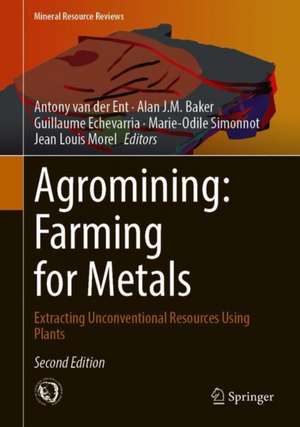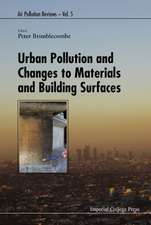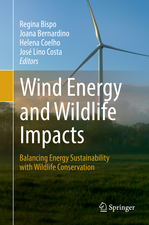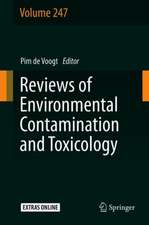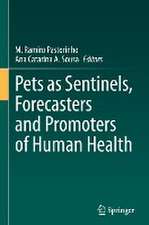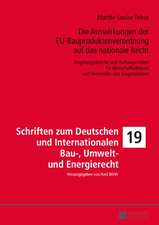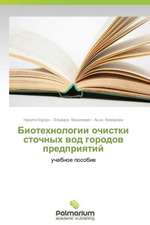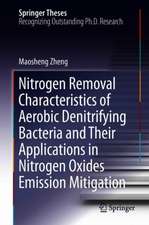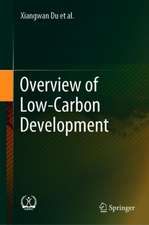Agromining: Farming for Metals: Extracting Unconventional Resources Using Plants: Mineral Resource Reviews
Editat de Antony van der Ent, Alan J.M. Baker, Guillaume Echevarria, Marie-Odile Simonnot, Jean Louis Morelen Limba Engleză Hardback – 8 dec 2020
| Toate formatele și edițiile | Preț | Express |
|---|---|---|
| Paperback (1) | 712.69 lei 43-57 zile | |
| Springer International Publishing – 9 dec 2021 | 712.69 lei 43-57 zile | |
| Hardback (1) | 967.40 lei 43-57 zile | |
| Springer International Publishing – 8 dec 2020 | 967.40 lei 43-57 zile |
Preț: 967.40 lei
Preț vechi: 1179.75 lei
-18% Nou
Puncte Express: 1451
Preț estimativ în valută:
185.14€ • 192.57$ • 152.84£
185.14€ • 192.57$ • 152.84£
Carte tipărită la comandă
Livrare economică 14-28 aprilie
Preluare comenzi: 021 569.72.76
Specificații
ISBN-13: 9783030589035
ISBN-10: 303058903X
Ilustrații: IX, 489 p. 119 illus., 108 illus. in color.
Dimensiuni: 178 x 254 mm
Greutate: 1.08 kg
Ediția:2nd ed. 2021
Editura: Springer International Publishing
Colecția Springer
Seria Mineral Resource Reviews
Locul publicării:Cham, Switzerland
ISBN-10: 303058903X
Ilustrații: IX, 489 p. 119 illus., 108 illus. in color.
Dimensiuni: 178 x 254 mm
Greutate: 1.08 kg
Ediția:2nd ed. 2021
Editura: Springer International Publishing
Colecția Springer
Seria Mineral Resource Reviews
Locul publicării:Cham, Switzerland
Cuprins
1 The Long Road to Developing Agromining/Phytomining.- 2 Agronomy of ‘Metal Crops’ Used in Agromining.- 3 Processing of Bio-ore to Products.- 4 Processing of Bio-ore to Products: REEs, and other elements.- 5 Life Cycle Assessment and Ecosystem Services of Agromining.- 6 Global Distribution and Ecology of Hyperaccumulator Plants.- 7 Physiology and Molecular Biology of Trace Element Hyperaccumulation.- 9 Tools for the Discovery of Hyperaccumulator Plant Species and Understanding Their Ecophysiology.- 10 Genesis and Behaviour of Ultramafic Soils and Consequences for Nickel Biogeochemistry.- 11 The Role of the Rhizosphere and Microbes Associated with Hyperaccumulator Plants in Metal Accumulation.- 12 Incorporating Hyperaccumulator Plants into Mine Rehabilitation in the Asia-Pacific Region.- 13 Agromining of High-Value Elements and Contaminants from Minerals Wastes.- 14 Agromining from Various Industrial Wastes.- 15 Phytoextraction of Cadmium: Feasibility in Field Applications and Potential Use of Harvested Biomass.- 16 Metal recovery with agromining from former mine and industrial sites under restoration.- 17 Element Case Studies: Nickel (temperate/Mediterranean regions).
Notă biografică
Dr Antony van der Ent is an ecophysiologist and biogeochemist whose research focuses on trace elements in soil and plant systems. He has a specific interest in the application of phytotechnologies that utilize hyperaccumulator plants (including agromining and phyto-extraction). He has had the opportunity to study trace element hyperaccumulator plants all around the world in temperate and in tropical regions.
Professor Alan J. M. Baker is an ecophysiologist and evolutionary biologist and is a pioneer in the study of metal uptake, tolerance, and accumulation in plants. In his long research career, he has been at the forefront of the development of phytotechnologies using hyperaccumulator plants for the decontamination and restoration of metal-polluted soils and for phytomining applications.
Professor Guillaume Echevarria is a soil biogeochemist who dedicated 25 years of research to the understanding of the fate of nickel in soil–plant systems globally. He has focused on both thespecific biogeochemistry of nickel in natural ultramafic environments and the agronomy of Ni hyperaccumulator plants in agromining contexts.
Professor Marie-Odile Simonnot is a chemical engineer specialized in separation science with a special interest in environmental issues. She has been working for more than a decade on the valorisation of metals contained in bio-ore derived from hyperaccumulator plant biomass, specifically by using hydrometallurgy. She is also interested in the environmental assessment of processes by life cycle assessment.
Professor Jean Louis Morel is an expert on environmental biology and applications for soil remediation, ecosystem restoration, and agromining. He has a background in soil science with a strong interest in anthropized areas, including mining, industrial, and urban areas. His group developed phytoremediation, especially phytoextraction of metals. He proposed the term “agromining” for the chain of technologies that make up metal farming.
Professor Alan J. M. Baker is an ecophysiologist and evolutionary biologist and is a pioneer in the study of metal uptake, tolerance, and accumulation in plants. In his long research career, he has been at the forefront of the development of phytotechnologies using hyperaccumulator plants for the decontamination and restoration of metal-polluted soils and for phytomining applications.
Professor Guillaume Echevarria is a soil biogeochemist who dedicated 25 years of research to the understanding of the fate of nickel in soil–plant systems globally. He has focused on both thespecific biogeochemistry of nickel in natural ultramafic environments and the agronomy of Ni hyperaccumulator plants in agromining contexts.
Professor Marie-Odile Simonnot is a chemical engineer specialized in separation science with a special interest in environmental issues. She has been working for more than a decade on the valorisation of metals contained in bio-ore derived from hyperaccumulator plant biomass, specifically by using hydrometallurgy. She is also interested in the environmental assessment of processes by life cycle assessment.
Professor Jean Louis Morel is an expert on environmental biology and applications for soil remediation, ecosystem restoration, and agromining. He has a background in soil science with a strong interest in anthropized areas, including mining, industrial, and urban areas. His group developed phytoremediation, especially phytoextraction of metals. He proposed the term “agromining” for the chain of technologies that make up metal farming.
Textul de pe ultima copertă
This second and expanded edition of the first book on agromining (phytomining) presents a comprehensive overview of the metal farming & recovery of the agromining production chain. Agromining is an emerging technology that aims to transform the extraction of sources of target elements not accessible by traditional mining and processing techniques. Agromining, which is based on sustainable development, uses hyperaccumulator plants as 'metal crops' farmed on sub-economic soils or minerals wastes to obtain valuable target elements. This volume is edited and authored by the pioneers in the rapidly expanding field of agromining and presents the latest insights and developments in the field. This book provides in-depth information on the global distribution and ecology of hyperaccumulator plants, their biogeochemical pathways, the influence of rhizosphere microbes, the physiology and molecular biology of hyperaccumulation, as well as aspects of propagation and conservation of these unusual plants. It describes the agronomy of metal crops and opportunities for incorporating agromining into rehabilitation and mine closure, including test cases for agromining of nickel, cobalt, manganese, arsenic, selenium, cadmium, zinc, thallium, rare earth elements and platinum group elements. Since the first edition was published, there have successful nickel agromining field trials in the tropics (in Malaysia and Guatemala), and these are presented in a dedicated case study chapter. Other new chapters focus on the processing of bio-ore for elements other than nickel, such as rare earth elements and cadmium, and on agromining from industrial wastes such as tailings, and industrial by-products and sites. Furthermore, the book features two new chapters that provide a comprehensive assessment of accumulation a very wide range elements from the Periodic Table in various plant species around the globe, and a chapter on practical methods for discovery of hyperaccumulator plant species in the field and in the herbarium. This book is of interest to environmental professionals in the minerals industry, government regulators, and academics.
Caracteristici
Second edition of the pioneer book on agromining/phytomining around the globe Written and edited by the foremost experts in the field of agromingin Provides a comprehensive overview of the complete chain of agromining: from soils and hyperaccumulator plants to agronomy and processing of bio-ores
